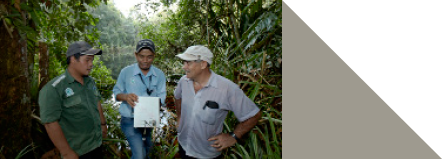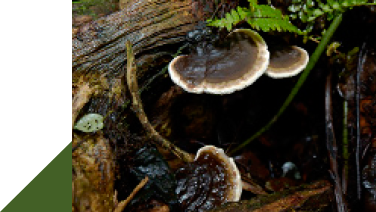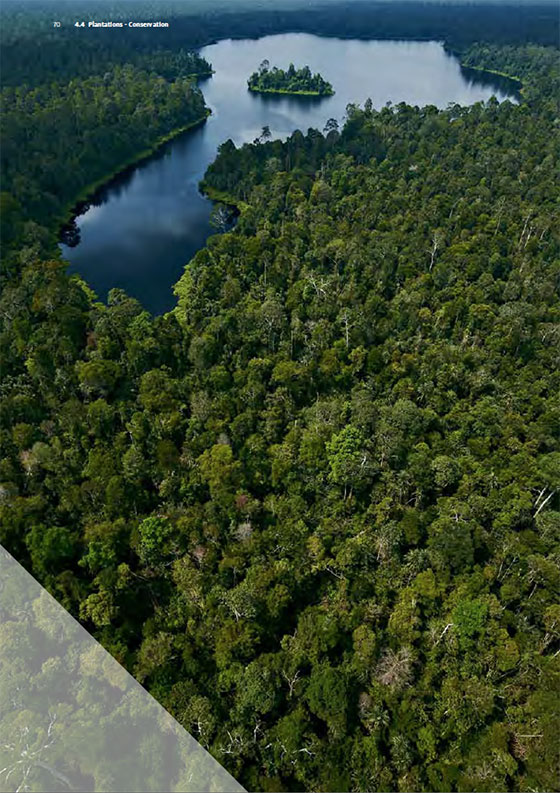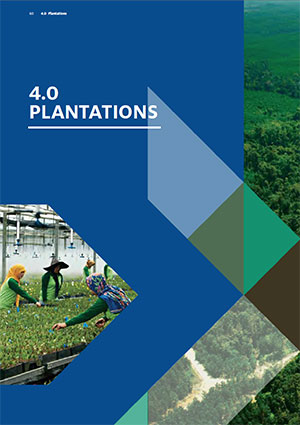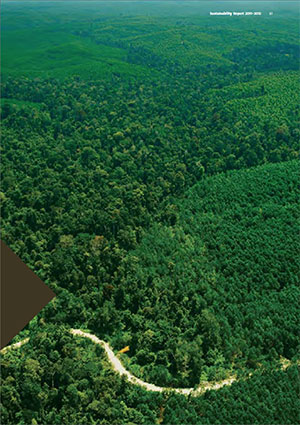Sustainable forest management practices are essential to maintaining healthy and productive forests. APRIL’s forest management practices aim to safeguard the quantity and quality of the company’s forest resources by achieving a long-term balance between harvesting and re-growth.
APRIL complies with all laws, regulations and licensing requirements in the management of its concessions and meets or better than meets Government benchmark requirements for the delineation and protection of conservation forest.
Our approach to managing land has been developed based on the cumulative experience of our 19 years of operation in Riau Province. During that period, APRIL has learned which conservation strategies are effective and which are not. We have continually adapted our practices accordingly.
A key learning has been that in Riau Province, areas identified for conservation but not effectively protected are subject to significant degradation by human encroachment and illegal logging.
As a result, APRIL’s own land-use delineation practices now emphasise protection – both in terms of on-the-ground resources and in designing plantations to establish buffer zones that make encroachment and illegal logging in conservation areas more difficult.
The company’s policies ensure that no fibre for APRIL’s production processes is sourced from areas delineated as conservation zones in Government-approved land use plans or from tree species protected under Indonesian laws.
It is APRIL’s view that well run production forests deliver strong environmental and social outcomes through Government mandated systems and practical, tested sustainable forest management and conservation programmes.
Land-use planning, which since 2005 has included high conservation value assessments, is completed prior to commencement of plantation establishment.
Before a plantation concession license is awarded, APRIL’s land development specialists conduct preliminary evaluations of available concessions, assessing soil and land types for potential fibre plantation growth rates, access and wood transport distances, the quality of existing vegetation and identification of any social issues.
A land-use planning process then follows that ensures and incorporates compliance with legal requirements, science-based practices and voluntary commitments.
We are guided by the Indonesian Government’s forestry regulations that stipulate the general allocation of land to be used for fibre, community livelihood, natural tree plantations, conservation forest, and infrastructure.
A macro-delineation occurs using available vegetation and environmental data to broadly identify appropriate land use allocations within the concession.
Subsequently, a micro-delineation occurs by an expert third party to differentiate areas to be maintained as natural forest and those areas suitable for development into fibre plantations. This is done based on specific legal criteria focusing on protecting sensitive soils, hydrological features, wildlife and cultural sites. These processes fulfill Indonesia’s legal requirements for land-use plan development.
Particular additional steps take place where development occurs on peatland concessions (described in section 4.7 of this Report).
High Conservation Value Forest Delineation
Prior to the development of concessions and as a voluntary commitment since 2005, APRIL has conducted High Conservation Value (HCV) assessments for each new concession area based on the Toolkit for Identification of High Conservation Values in Indonesia (2008). These assessments identify and delineate exceptionally important biodiversity values, ecosystem elements and social or cultural values and recommend management and monitoring activities to maintain and enhance these values.
APRIL reaffirms its commitment to the integration of High Conservation Value (HCV) assessments into its land-use planning processes and to the application of the HCV Indonesia Toolkit to delineate and protect conservation zones and indigenous tree species areas within its concessions.
APRIL incorporates the findings of HCV assessments into its land-use planning processes and undertakes fibre plantation development in ways that will maintain the HCV.
Generally, the HCV process confirms the micro-delineation and water management planning that has been conducted.
APRIL has found the HCV processes and concepts to be valuable planning tools. We identify and delineate additional values that may result in the conservation of additional areas of natural forest.
The guidance and recommendations from HCV experts enable our planners and managers to implement best practices and achieve sustainable wood production through a rational balance between environmental conservation, social concerns and economic development.
It is important to recognize that the HCV approach in Indonesia acknowledges that one or more forms of active management can be undertaken to ensure the maintenance or enhancement of one or more high conservation values in an area.
APRIL Indonesia works closely with leading HCV experts in Indonesia and through the Global HCV Resource Network to develop consistent approaches for application of HCV processes to the context of developing fibre plantations in Indonesia. Many detailed questions and issues of interpretation can arise on the appropriate manner for applying the HCV Toolkit in the Indonesian context.
Our managers and internal specialists participate in regional and global HCV forums and work with partners who are experts in the application of the HCV Toolkit.
Figure 45: HCV INDICATORS
Overall Protection of Conservation Areas by APRIL
Of APRIL’s total concessions, the areas set aside and conserved following incorporation of HCV assessments in landuse plans account for approximately 26% of our total concession areas or 88,610 hectares. As referenced in section 4.2 of this Report, when the conservation and indigenous tree species areas set aside by both APRIL and long-term supply partners are combined, they account for more than 220,000 hectares.
APRIL audits its own concessions to ensure actual conservation areas correspond with areas identified as conservation in land management plans and where any discrepancies are found, an investigation takes place and rectification actions are undertaken.
Internal reviews of our performance in protecting conservation zones on our own concessions has shown that, despite the continuous threat of encroachment, a high level of protection has been achieved.
Third-party reviews have been undertaken by assessors and verifiers under the various certification schemes APRIL participates in.
Independent monitoring, including by Government-appointed Monitoring, Reporting and Verification (MRV) teams (see section 4.9 of this Report) has verified APRIL’s adherence to land-use plans and confirmed that designated conservation areas are well protected.
Protecting Biodiversity
APRIL Indonesia’s forest conservation activities contribute to protecting natural forests with high levels of biodiversity. These areas commonly occur along streams, rivers and other hydrologic features.
Constant monitoring, patrols and collaboration with law enforcement authorities reduce the incidence of poaching of protected animal species. APRIL’s forest protection officers and security teams conduct both ground and aerial patrols to identify, quickly respond to and stop threats to native wildlife.
APRIL’s conservation zones and the buffering of them with strategically placed plantations provide significant biodiversity and wildlife security, compared with other land management practices occurring outside our concessions.
The International Union for Conservation of Nature (IUCN) maintains a Red List of Threatened Species (also known as the IUCN Red List or Red Data List). It is the world’s most comprehensive inventory of the global conservation status of biological species. Protection of listed species is fully factored into APRIL land-use evaluations and protective actions.
Within the broader landscape of the areas in Riau Province where we operate, there are habitats for a number of notable species, including the Sumatran tiger, Asian elephant, tapir, hornbill species, white winged wood duck, Storm’s stork and giant river turtle.
On an ongoing basis, at a concession level, APRIL’s land-use management plans and our standard operating procedures provide for monitoring for indications of the presence of these species.
In addition, numerous other less well known and less studied species can be found. Importantly, APRIL conservation areas maintain the potential for protection and connectivity of species at the landscape level.
